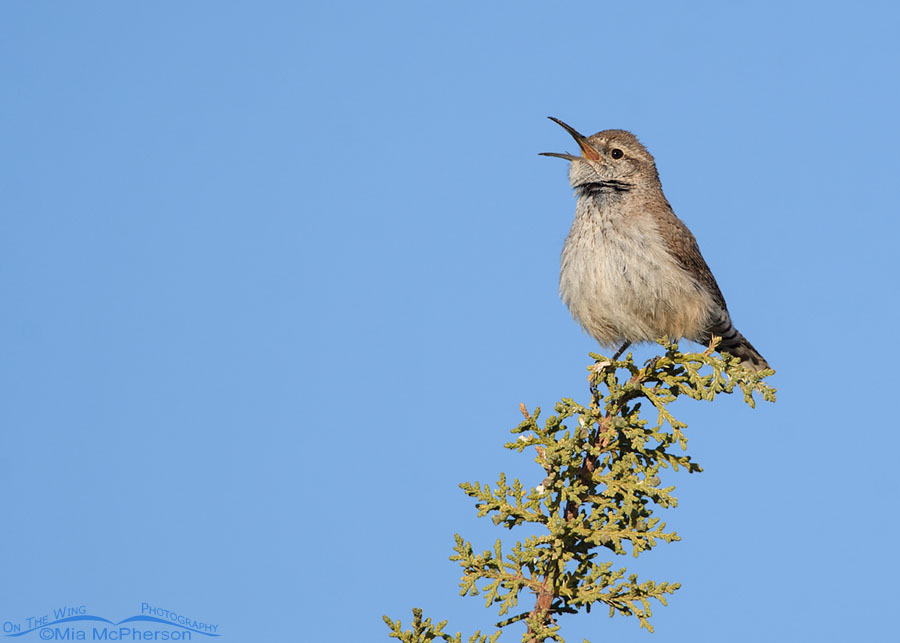 Adult Rock Wren singing from a juniper – Nikon D500, f6.3, 1/2000, ISO 500, +0.7 EV, Nikkor 500mm VR with 1.4x TC, natural light
Adult Rock Wren singing from a juniper – Nikon D500, f6.3, 1/2000, ISO 500, +0.7 EV, Nikkor 500mm VR with 1.4x TC, natural light
Yesterday when I spotted a Rock Wren singing from the top of a juniper in Utah’s West Desert I hoped to take a few decent photos of it before it flew away. I see and hear Rock Wrens quite often in desert habitat but they are usually too far away to get high quality images of them. I was excited to have this wren singing, close and in my viewfinder.
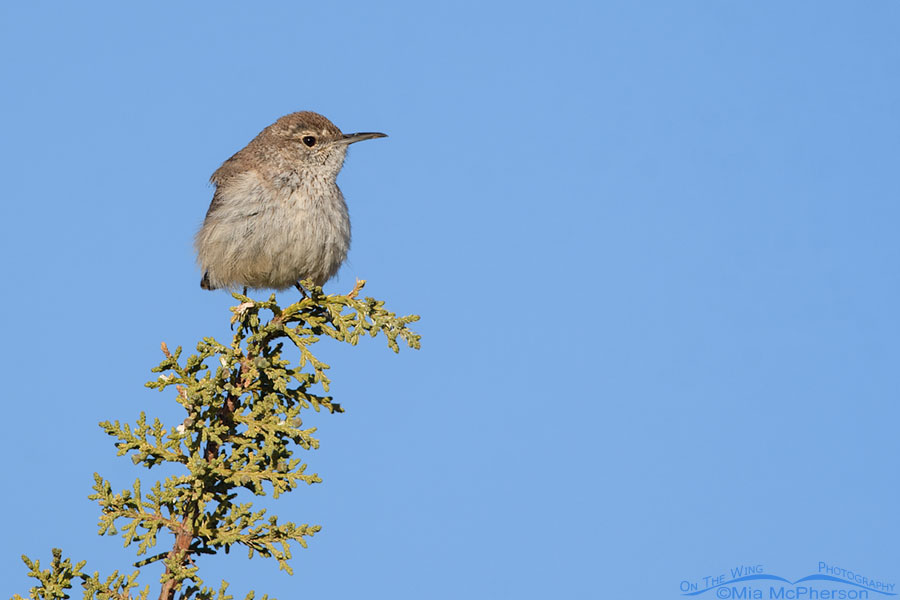 Rock Wren perched on top of a juniper – Nikon D500, f6.3, 1/2000, ISO 500, +0.7 EV, Nikkor 500mm VR with 1.4x TC, natural light
Rock Wren perched on top of a juniper – Nikon D500, f6.3, 1/2000, ISO 500, +0.7 EV, Nikkor 500mm VR with 1.4x TC, natural light
I’m used to seeing Rock Wrens on rocks and cliff faces not perched on the top of a juniper so I took a long, long series of it singing and looking around. The sky was clear and the wren stood out from it well. At the time I thought the wren would fly from the top of the tree and that would be all of the images of it that I would get. The wren had other plans though.
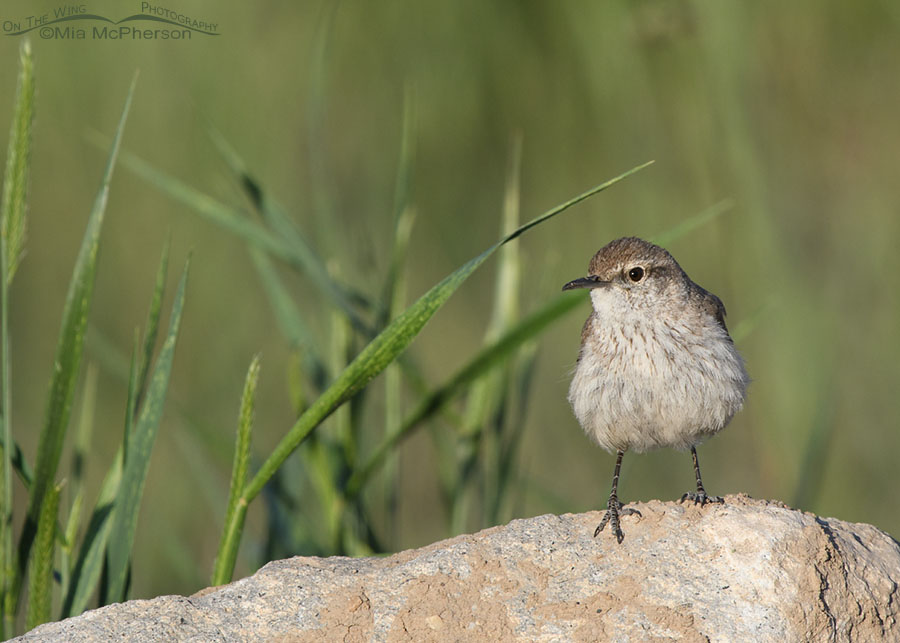 Adult Rock Wren in Utah’s West Desert – Nikon D500, f6.3, 1/1600, ISO 500, Nikkor 500mm VR with 1.4x TC, natural light
Adult Rock Wren in Utah’s West Desert – Nikon D500, f6.3, 1/1600, ISO 500, Nikkor 500mm VR with 1.4x TC, natural light
When the Rock Wren left the top of the juniper it flew to the ground and landed on a rock next to the road where it foraged and sang intermittently. The wren was illuminated nicely by the soft morning light.
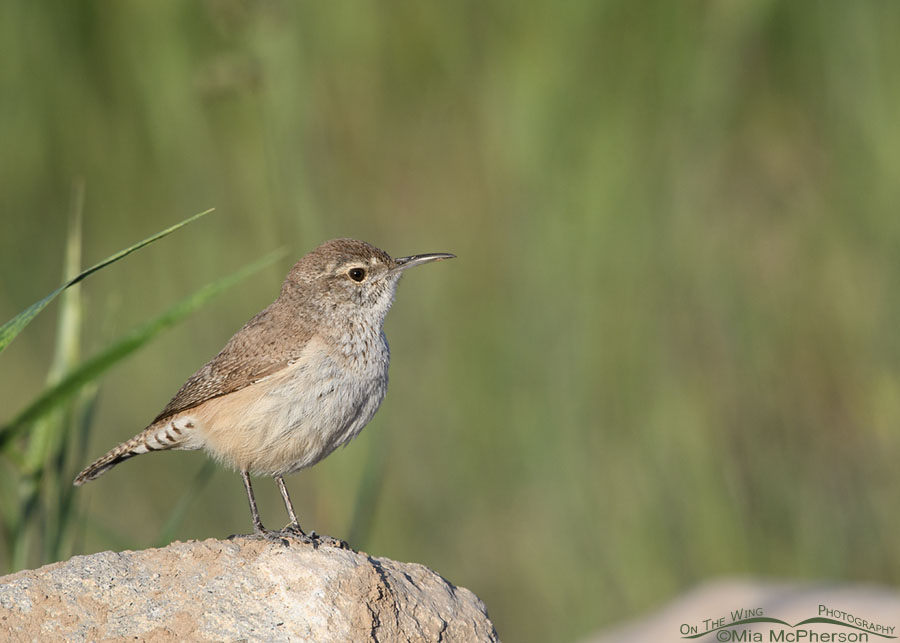 Adult Rock Wren perched on a rock – Nikon D500, f6.3, 1/1250, ISO 500, Nikkor 500mm VR with 1.4x TC, natural light
Adult Rock Wren perched on a rock – Nikon D500, f6.3, 1/1250, ISO 500, Nikkor 500mm VR with 1.4x TC, natural light
I was happy to take photo after photo of this little songster moving around on the rock and to observe its behavior through my viewfinder.
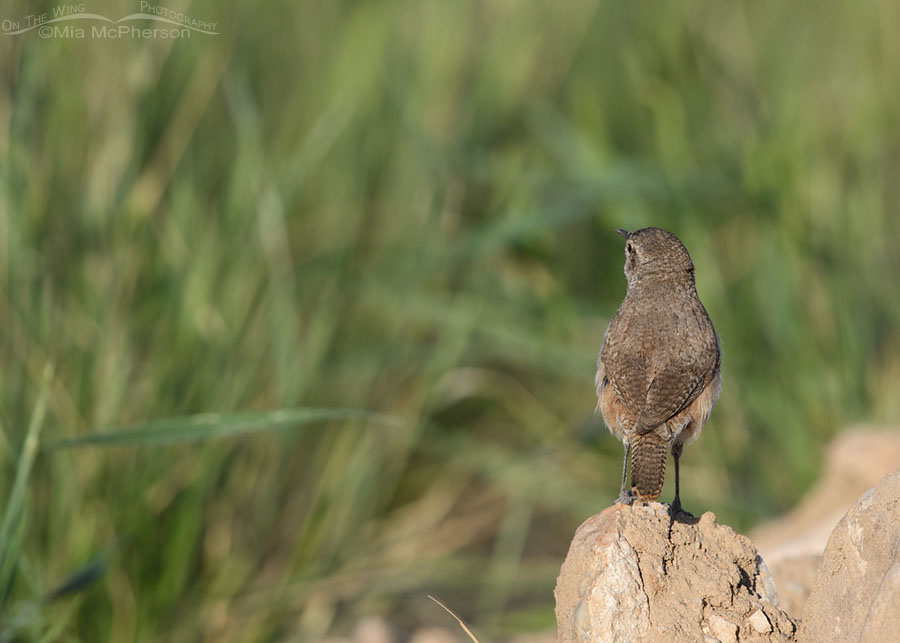 Back view of an adult Rock Wren – Nikon D500, f6.3, 1/1250, ISO 500, Nikkor 500mm VR with 1.4x TC, natural light
Back view of an adult Rock Wren – Nikon D500, f6.3, 1/1250, ISO 500, Nikkor 500mm VR with 1.4x TC, natural light
I’m including this back view of the Rock Wren for those who are interested in bird identification because at least superficially it looks similar to a House Wren from behind.
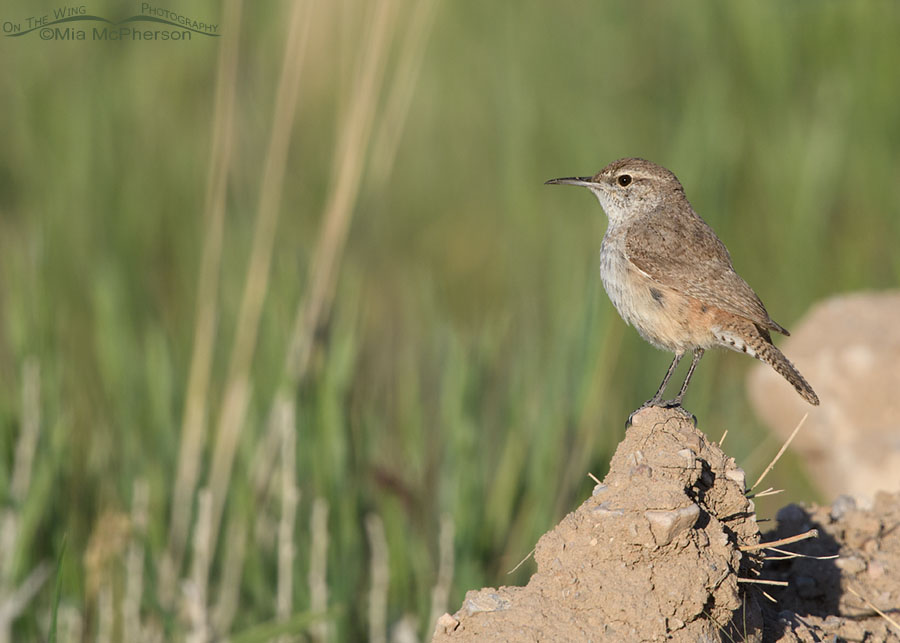 Rock Wren perched on a clod of dirt – Nikon D500, f6.3, 1/1600, ISO 500, Nikkor 500mm VR with 1.4x TC, natural light
Rock Wren perched on a clod of dirt – Nikon D500, f6.3, 1/1600, ISO 500, Nikkor 500mm VR with 1.4x TC, natural light
But a profile view like this one shows the speckled grayish upperparts, the whitish throat and breast with fine gray streaks and the buffy flanks that are key identification features for this species.
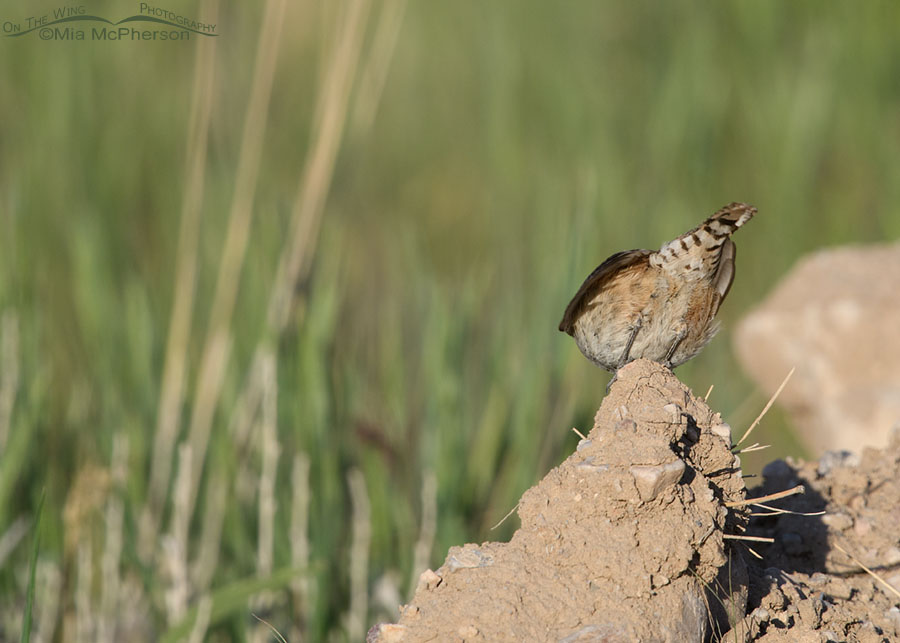 The tail end of a Rock Wren – Nikon D500, f6.3, 1/1600, ISO 500, Nikkor 500mm VR with 1.4x TC, natural light
The tail end of a Rock Wren – Nikon D500, f6.3, 1/1600, ISO 500, Nikkor 500mm VR with 1.4x TC, natural light
This view shows the light and dark marks on the undertail coverts that is also another identification feature for this species. To be completely frank though I can identify this species with just its song.
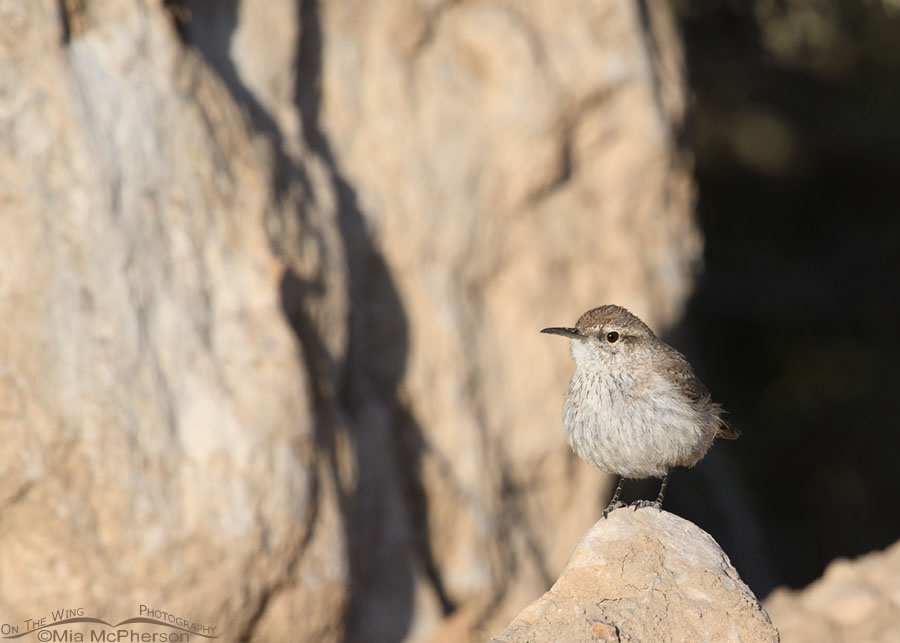 Rock Wren adult perched in front of rocks – Nikon D500, f6.3, 1/1600, ISO 500, Nikkor 500mm VR with 1.4x TC, natural light
Rock Wren adult perched in front of rocks – Nikon D500, f6.3, 1/1600, ISO 500, Nikkor 500mm VR with 1.4x TC, natural light
When the Rock Wren flew over to different rocks near the side of the road I was more than happy to take photos of it there. I liked the contrast of bright rocks and dark shadows in this frame.
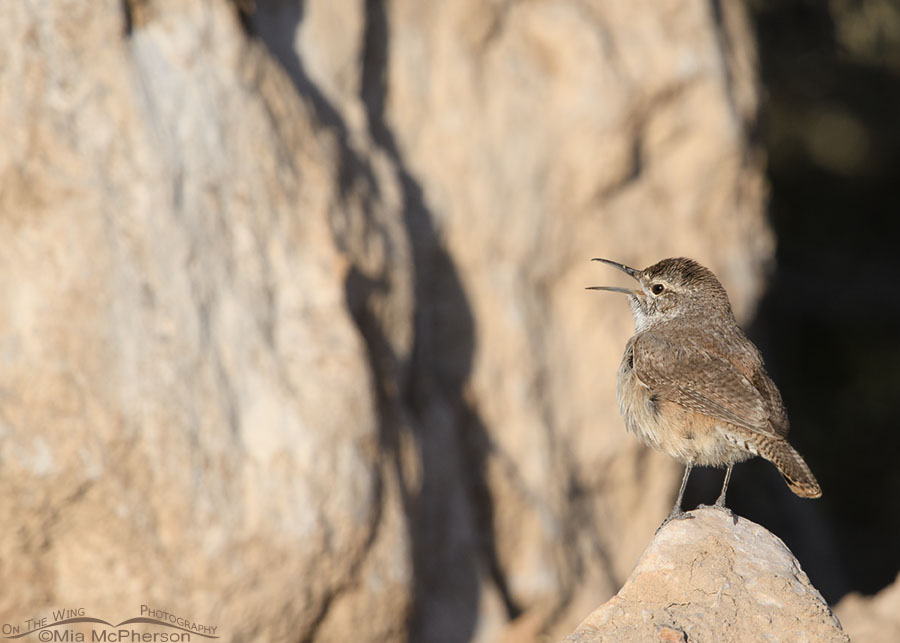 Adult Rock Wren singing in the West Desert – Nikon D500, f6.3, 1/1600, ISO 500, Nikkor 500mm VR with 1.4x TC, natural light
Adult Rock Wren singing in the West Desert – Nikon D500, f6.3, 1/1600, ISO 500, Nikkor 500mm VR with 1.4x TC, natural light
And this image too where the Rock Wren started to sing again. I do wish that the wren were looking a little more towards me in this photo but this is a bird not a high paid model and birds do what they want to do.
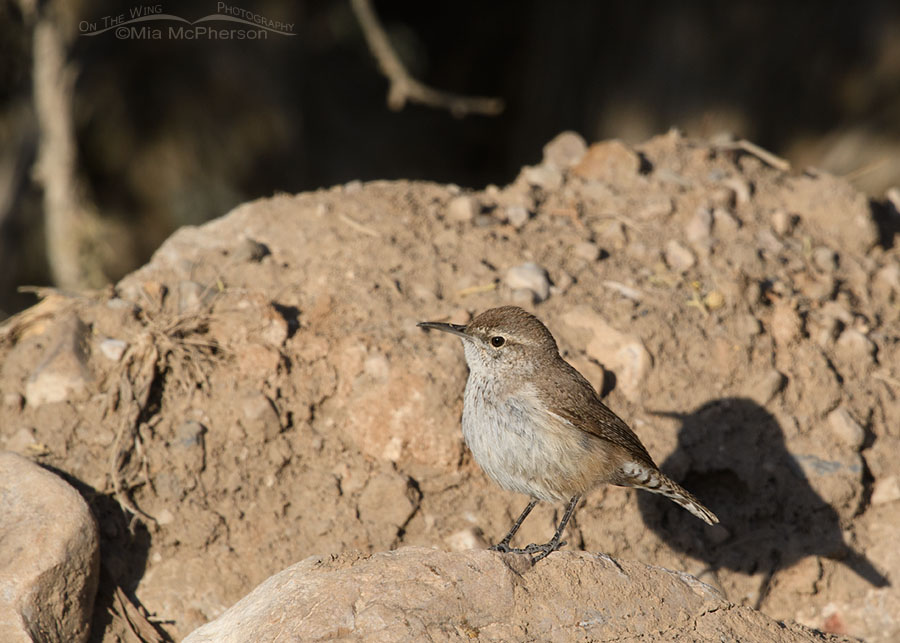 Rock Wren and its shadow – Nikon D500, f6.3, 1/2000, ISO 500, Nikkor 500mm VR with 1.4x TC, natural light
Rock Wren and its shadow – Nikon D500, f6.3, 1/2000, ISO 500, Nikkor 500mm VR with 1.4x TC, natural light
I wanted to include this photo because when the wren moved to another rock I liked how its shadow fell on the clump of dirt behind it.
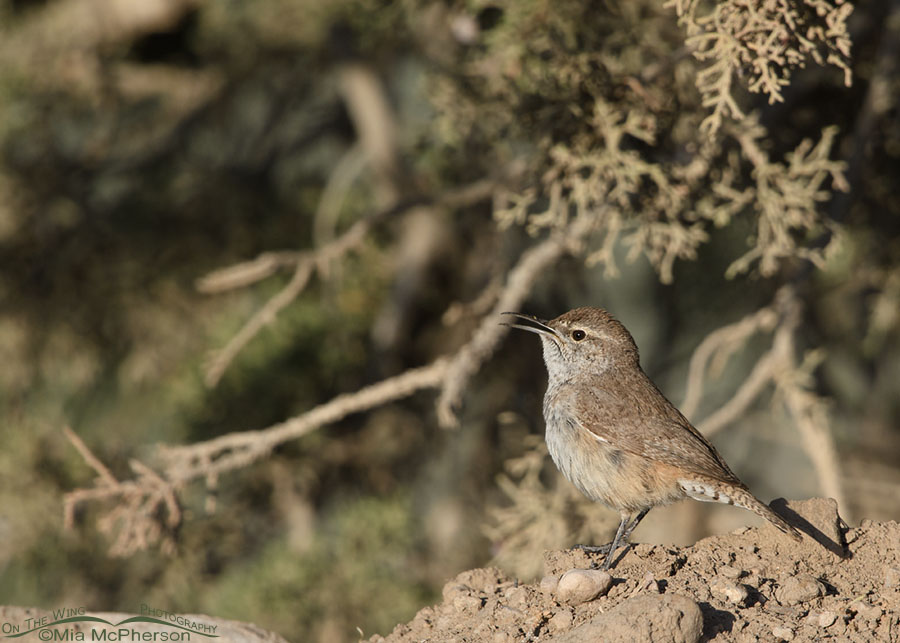 Rock Wren singing at the base of a juniper – Nikon D500, f6.3, 1/1600, ISO 500, Nikkor 500mm VR with 1.4x TC, natural light
Rock Wren singing at the base of a juniper – Nikon D500, f6.3, 1/1600, ISO 500, Nikkor 500mm VR with 1.4x TC, natural light
As the Rock Wren foraged it stopped often to sing. Here it is in on a clump of dirt left by a recent grading of the road.
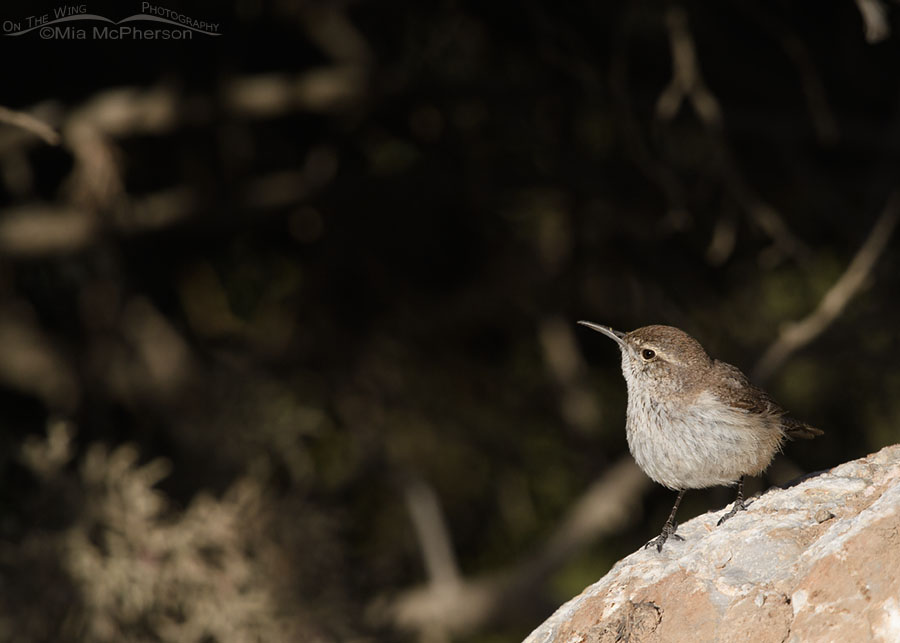 Adult Rock Wren on a boulder – Nikon D500, f6.3, 1/1600, ISO 500, Nikkor 500mm VR with 1.4x TC, natural light
Adult Rock Wren on a boulder – Nikon D500, f6.3, 1/1600, ISO 500, Nikkor 500mm VR with 1.4x TC, natural light
Then the wren finally perched for a few seconds on a large boulder that I had hoped it would land on that was in front of a juniper. I liked the contrast of the light and shadows in this image.
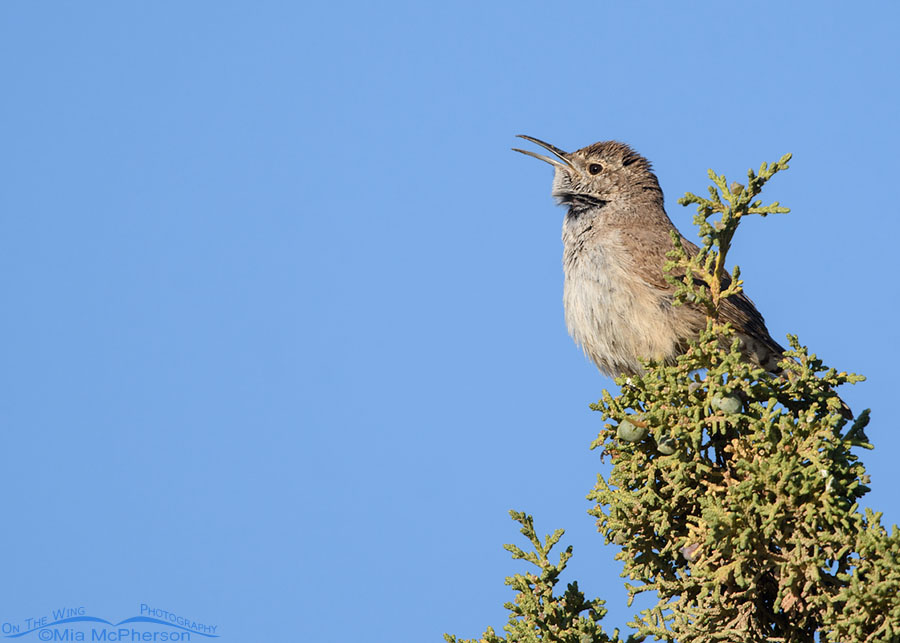 Rock Wren singing on a juniper – Nikon D500, f6.3, 1/1250, ISO 500, +1.0 EV, Nikkor 500mm VR with 1.4x TC, natural light
Rock Wren singing on a juniper – Nikon D500, f6.3, 1/1250, ISO 500, +1.0 EV, Nikkor 500mm VR with 1.4x TC, natural light
Finally the Rock Wren flew up to the top of another juniper to sing its song again. I took another long series of images of the wren singing on the tree and watched it take off and fly away.
I was thoroughly enchanted by this small Rock Wren as I photographed it. I saw and photographed more birds yesterday but in my mind this Rock Wren was the highlight of my morning in the West Desert.
Life is good.
Mia
Click here to see more of my Rock Wren photos plus facts and information about this species.


Lovely series, made me feel like I was there!
Another wonderful group of pics. Each shot is, in it’s own way, worthy of a frame. Thanks Mia
Thanks for sharing your time with this rock wren, Mia. I really feel like I was there with you and your new wren friend.
“Enchanting,” is definitely the perfect word to describe this little lovely.
Beautiful series! I can’t find a favorite, I love them all.
A dainty charmer – and a wonderful series.
These little birds have one of the sweetest songs I ever heard — way out in the middle of canyon country in southeastern Utah. They had found a wet oasis down in a small rocky box. They sang and sang and sang.
Nice series of images. I do not remember ever even seeing a Rock Wren perched on a tree or shrub, although I agree that they have a nice song. Then I read on and saw that you also found this to be unusual. Then the bird again settled on a branch!
wow – these shots really show how active that Wren is! Good to see!
Great shot, beautiful!